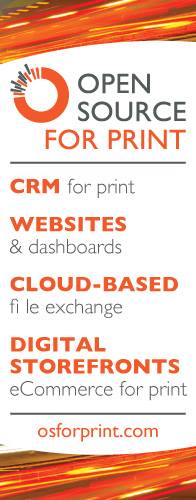And why you shouldn’t let your IT design your website
By Charles Groce, CEO of Pearl Street Consulting
Republished from Graphic News magazine, August 2016
You’ve probably done this before. You decide to scope out a new potential vendor’s website before making the choice of who to work with only to find out their website looks like it’s from the late 90’s and has a “Copyright 2008” in the footer. “Are these people even still in business?” you wonder. “I don’t think I can trust a vendor who doesn’t update their website.” If your company website fits this description then this is exactly what your potential customers think when they visit your website.
Like it or not, the internet has fundamentally changed the way we make purchasing decisions. Whether we want to purchase a new t-shirt or a new car, we like to research a little bit on our own to help make the most informed decision. The incredible power of internet search engines allow us to do that efficiently and effectively. Our search engine of choice even ranks potential vendors according to their relevance and popularity. Pretty neat stuff really.
I recently had a conversion with a printing company owner about his experience with his company website and the prospects for getting a new one. He pointed out that his website had really produced no significant business and he worried updating it would be an expensive waste of money. I had an epiphany and replied “Your company website is like your suit. Although you may not prefer to walk around in a suit all day, you must own one. And if you’re going to wear a suit then it had better be nice.” You want to look good, don’t you!?
I think this is an appropriate metaphor, but it’s not the end of the story. Updating your company website does not have to be expensive and, in 2016, your website absolutely should be a tool for generating new sales, especially when combined with technology-driven online and offline marketing initiatives.
Today’s community-built web publishing tools, also known as open source web publishing tools, are incredibly powerful compared to the tools of 10 years ago. Due to a resultant increase in productivity, today’s web publishing team doesn’t require nearly as many people and time and this, combined with the zero licensing costs associated with open source web publishing tools, means vastly lowered costs on any web project. Remember that as you scope out potential web agency partners (and remember that it was us that told you!).
Why design a website layout from scratch when there are dozens of layouts already built for platforms like WordPress and Drupal which provide you with the layout you need? Why write a website backend from scratch when the open source community has already built systems far better than you and your web team could build? Don’t reinvent the wheel is as relevant to building cars as it is to web publishing.
Here’s another metaphor. Just like you shouldn’t ask your mother to sew your business suit from old blankets and bits of fabric laying around the family farmhouse, you shouldn’t have your IT or prepress staff design your market facing online identity. Although your IT people are quite capable of keeping your company website running in a technical sense, understanding how your company website content should appeal to the psychology of potential and existing customers is beyond their department.
Moreover, a successfully designed and implemented website requires a deep knowledge of current online design trends and marketing techniques. You don’t get that in an IT closet or in prepress, you get it by doing it every day. (Yes, you too should be working with a web agency.)
Your website content is the most important aspect of your company website. It has to be good. It has to have a hook. For this reason, a knowledge of your market is required. This comes from your sales staff working together with a copy writer or a team that knows the industry.
Once the content and messaging is worked out, you can use online marketing techniques to drive traffic and give your hook the opportunity to do its job. It’s not just simple math: the more opportunities (web traffic), the more business. It’s also about the content: The better the content, the more likely your messaging appeals to the right kind of website visitor.
Online this means using a CRM (customer relationship management) system in conjunction with email marketing and social media marketing tools, along with SEO and advertising (if it’s worth it and pays for itself). Offline this means unifying your brochure and direct mail marketing efforts with the content on your website, creating an integrated, attractive set of content.
About the author: Charles Groce is the CEO of Pearl Street Consulting, a Michigan-based IT, web, and software consultancy. Charles is also the founder of Websites for Print and Open Source for Print.

